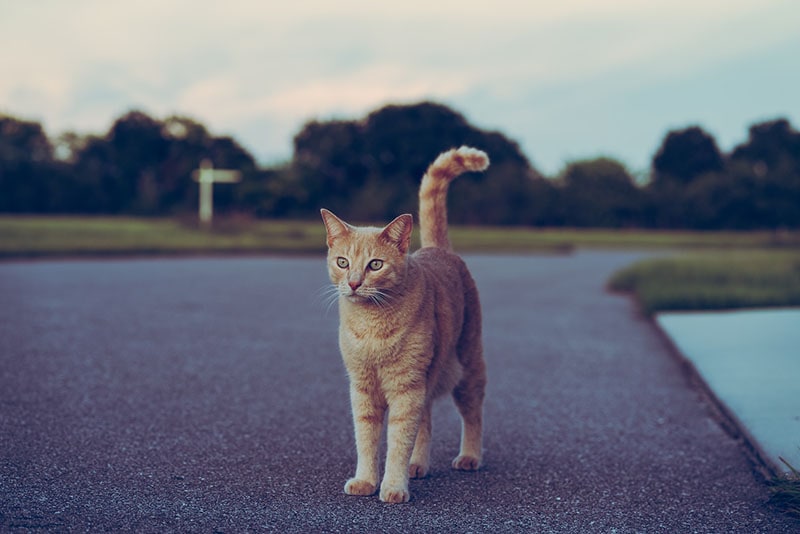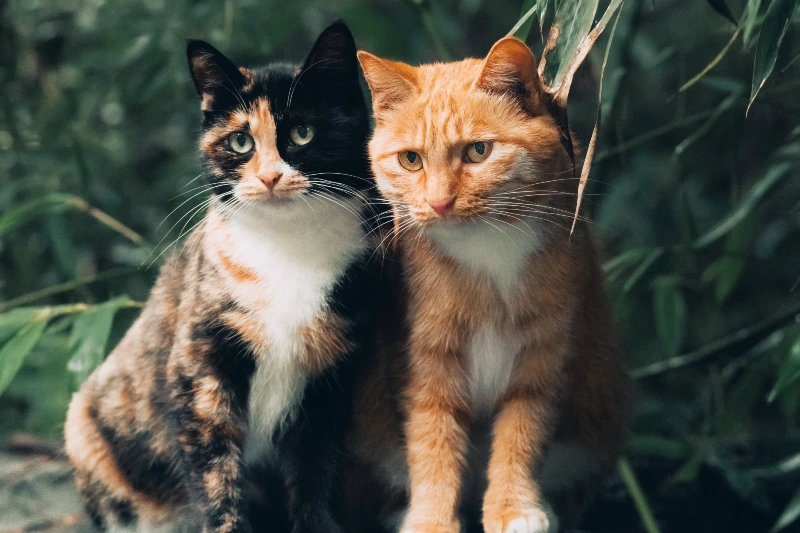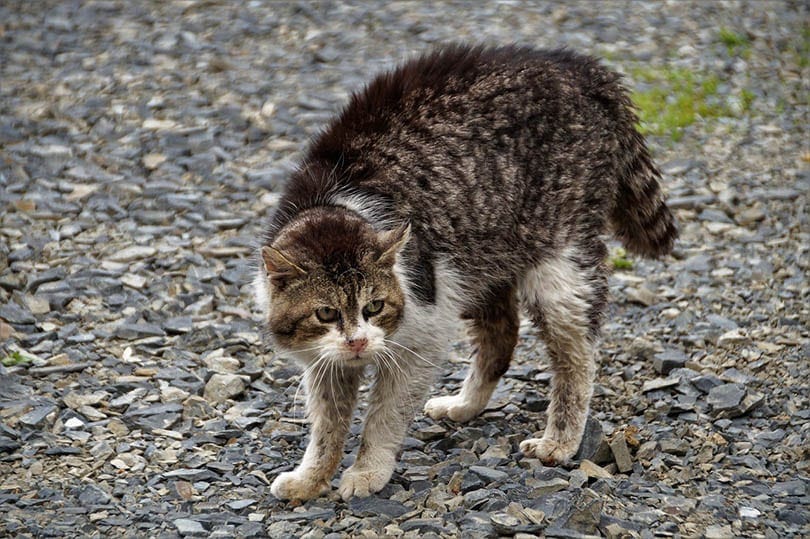Could A Cat Survive in A World Without Humans? Interesting Facts
By Lorre Luther
Updated on

If you’ve recently spent too much time watching nature films, you may wonder if your cat could survive in a world without humans. On the one hand, there isn’t much difference between house cats and leopards other than size, prey preferences, and strength, which suggests that your pampered pet may have the heritage to make it on their own.
Although pet cats are spoiled, and some have particular tastes regarding food and toys, they can live in a world without humans. There are currently millions of feral cats all around the world who live without regular human contact.
Cats Aren’t as Domesticated as Dogs
Felius catus, or domestic cats, haven’t been cooperatively living alongside humans for that long. While dogs have likely been domesticated for between 14,000 and 29,000 years, cats have probably only been willingly associating with people for a far shorter period — less than 12,000 years.
And while dogs were largely domesticated by breeding for traits to meet human requirements and preferences, cats have never been subjected to the same human-directed selection. Some scholars suggest that cats have essentially domesticated themselves; they’re happy to be around people if the situation suits them and perfectly fine on their own if not.

Similarities to Wildcats
Domestic cats even have skeletons that are strikingly similar to their nearest wild relatives, Felis silvestris, but true wildcats are larger than most domestic cats. Companion animals have the same sharp teeth, low-light-vision-optimized eyes, and sensitive whiskers as their wild species mates. And as any cat owner knows, housecats are perfectly capable when it comes to stalking abilities and pouncing.
Feral Cats and Housecats
There’s no physical difference between feral cats that live outdoors and housecats. Kittens need to interact positively with people when young to become comfortable being petted, touched, cuddled, or picked up, or they remain uncomfortable around humans. Those who grow up around people and associate humans with companionship and love are generally quite happy to enjoy the finer elements of indoor life, even if it requires them to tolerate being dressed in cute outfits for photo opportunities. Cats that don’t have regular, loving contact with humans as kittens often become feral and prefer to live without people around, and many do so quite effectively.
The World of Community Cats
Community cats are unowned domestic cats that live outdoors largely without human assistance; the term includes stray and feral cats. Cats living outdoors without owners vary in the amount of interaction with people they’ll tolerate and how much they depend on human activities to survive.
Stray Cats

Some cats living outdoors are stray, meaning they were socialized to accept human contact. Many are pets who’ve wandered off or simply become lost. Those who haven’t been away from people for too long are often willing to approach and accept food from humans. Some will even allow themselves to be adopted, often happy to return to the life of a companion animal. But other community cats are truly feral, never having been socialized to accept people as kittens. Stray cats can become feral if they spend enough time on their own.
Feral Cats

Some feral cats are more accepting of humans than others. Those living in colonies with human caregivers often tolerate their presence. The cats often grow to rely on their human caretakers for food, shelter, and even medical care in extreme situations. Other feral cats prefer to take advantage of the rodents often attracted by human garbage and have no real interest in interacting directly with people. They can often be found living independently in wooded areas behind places like apartment buildings.
They hunt, but their strategy depends on the presence of humans producing waste that attracts prey. However, feral cats also live in rural areas and take care of all their needs. If humans suddenly vanished from the earth, community cats would likely do just fine, as most know how to hunt and can be adaptable when adjusting their diets to take advantage of available food sources.
Feline Fertility and Longevity
While many trap-neuter-release (TNR) programs attempt to limit feral cat reproduction, most community cats around the world are likely intact, and we already have a sense of what uncontrolled feline reproduction would look like. Without human intervention, cats would more than hold their own as far as population growth is concerned. Female cats reach sexual maturity when they’re around 4 months old. Queens can have anywhere from 4 to 6 kittens per litter and up to three litters per year. The feline birth rate would likely dramatically rise without spaying and neutering.
The Effect of Humans Disappearing
That doesn’t mean the cat population would soar as soon as humans disappear. Cats would face far fewer dangers from toxic substances and cars without people, but humans provide other services that extend the cats’ longevity. Indoor cats live nice long lives, with many living to be 20 or older. Outdoor cats with owners often have shorter lives, and most only make it for 2 to 5 years. Feral cats have the shortest lifespans of all, with many only living for 3 years or so. Cats living in a world without humans would likely die younger and, as a result, produce fewer kittens over their lifetimes.

Why Feral Cats Live Short Lives
Feral cats live short lives partly because they’re regularly exposed to parasites, bacteria, and communicable diseases. They’re also more inclined to end up injured due to encounters with other animals. Dogs, eagles, coyotes, and groundhogs all prey on cats. Cats that manage to get away from predators can end up dying because of their injuries, either through infection or the inability to hunt. Unneutered outdoor cats often fight over access to reproductive opportunities and territory. And all of these dangers would limit feline longevity in a world without humans.
Conclusion
Cats could survive in a world without people! Feral cats around the world often do fine without human assistance. Cats that grow up without human contact often never become comfortable around people and are largely self-sufficient.
Cats have been domesticated for a shorter period than dogs, so they still have the skills and instincts to live successfully outdoors on their own. Even pampered house cats have been known to dispatch prey with stunning efficiency. Cats would probably be okay without humans, but they’d likely live relatively short lives.
Featured Image Credit: Josue Aguazia, Unsplash












